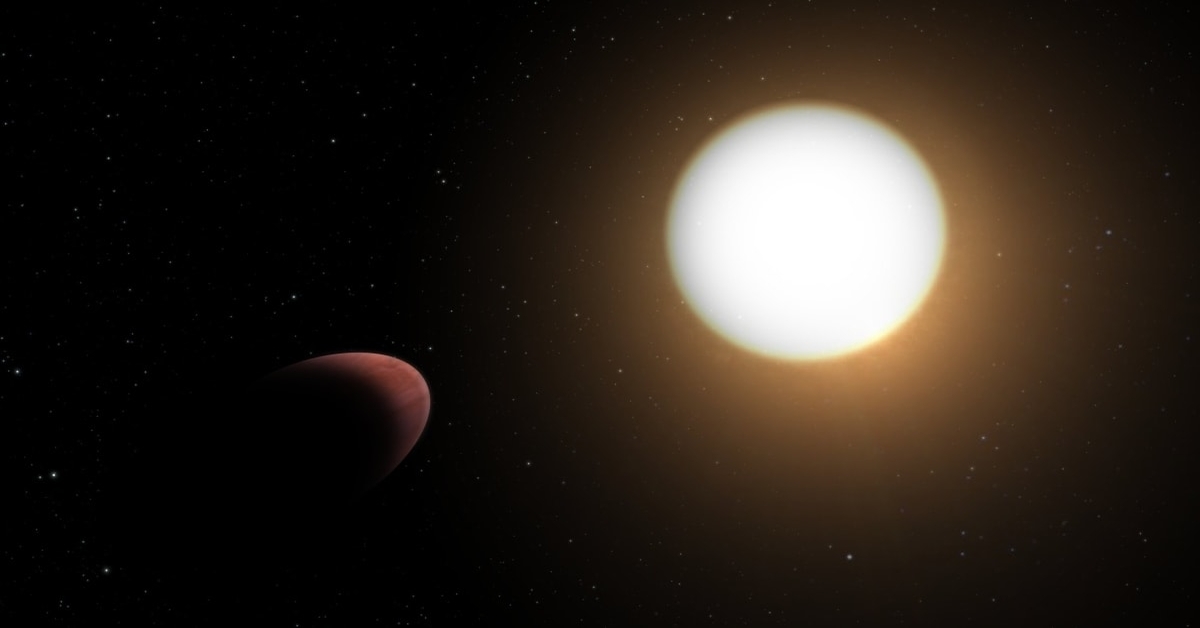Just when scientists think they know everything they need to know about exoplanets, something new and exotic swings past the sun. This time, it’s an exoplanet the shape of a rugby ball! (Or the shape of a potato… or an egg… Well, it depends on how hungry you are when you see it.)
About 1.5 times to mass of Jupiter, the massive exoplanet WASP-103b is approximately 1225 light-years from Earth. Published in Astronomy & Astrophysics, astronomers described the planet’s peculiar shape for the first time. But that’s not the only surprising feature of the planet…
A day on WASP-103b.
Situated 150 million kilometres (~93 million miles) away from the Sun, the planet we call home takes a year to make a full orbit. The planet in our Solar System that’s the closest to the Sun—Mercury—speeds around our host star every 88 days.
But if you were on WASP-103b, a “year” takes merely 22 hours. That’s because its distance from its host star is less than 32,000 kilometres (~20,000 miles)! Known as “Hot Jupiters”, this class of exoplanets orbit their host stars in a matter of days, sometimes just hours.
Astronomers initially discovered the planet in 2014. They suspected that the planet might have an odd shape based on modelling and its proximity to its host star, but now they can finally confirm their hypothesis.
Transit method reveals crucial details.
The weirdly shaped planet was pieced together using data from NASA’s Hubble and Spitzer space telescopes, under the European Space Agency’s CHEOPS (Characterising Exoplanet Satellite) mission, dedicated to investigating bright, nearby stars that are already known to host exoplanets.
Using the “transit method”, where the dim of a star is detected as an exoplanet passes by it, the scientists could extract a ton of info about the transiting exoplanet, including its size. But they also integrated another approach in this study, in which the light curves around WASP-103 are also analysed in order to ascertain the shape of the exoplanet. Through this study, they postulated that the exoplanet is being stretched at its equator, influenced by strong tidal stresses, and eventually evolved into a unique oblong, deformed shape.
Exoplanet galore.
With almost 5,000 exoplanets confirmed to date and almost 8,500 potential candidates, this astronomical amount of data enables astronomers to continuously refine the mechanisms of planet formation and even challenge our beliefs.
The next-generation James Webb Space Telescope, already parked at its final destination, will surely uncover even more strange worlds and we are beyond excited!






























